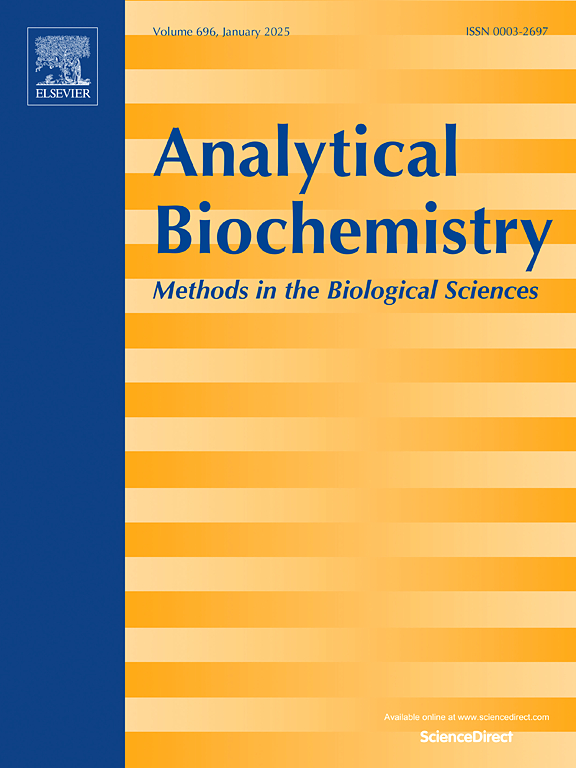Improving protein-protein interaction site prediction using graph neural network and structure profiles
IF 2.5
4区 生物学
Q2 BIOCHEMICAL RESEARCH METHODS
引用次数: 0
Abstract
Protein-protein interactions (PPIs) play a pivotal role in numerous biological processes. Accurate identification of the amino acid residues involved in these interactions is essential for understanding the functional mechanisms of proteins. To effectively integrate both structure and sequence information, we propose a new interaction site predictor, TargetPPI, which leverages bidirectional long short-term memory networks (Bi-LSTM), convolutional neural networks (CNN), and Edge Aggregation through Graph Attention layers with Node Similarity (EGR-NS) neural networks. In TargetPPI, CNN and Bi-LSTM are first employed to extract the global and local feature information, respectively. The combination of global and local features is then used as node embeddings in the graph derived from the protein structure. We have also extracted six discriminative structural features as edge features in the graph. Additionally, a mean ensemble strategy is used to integrate multiple prediction models with diverse model parameters into the final model, resulting in more accurate PPIs prediction performance. Benchmarked results on seven independent testing datasets demonstrate that, compared to most of the state-of-the-art methods, TargetPPI achieves higher accuracy, precision, and Matthews Correlation Coefficient (MCC) values on average, specifically, 84.3 %, 57.6 %, and 0.383, respectively. The source code of TargetPPI is freely available at https://github.com/bukkeshuo/TargetPPI.

利用图神经网络和结构剖面改进蛋白质相互作用位点预测。
蛋白质-蛋白质相互作用(PPIs)在许多生物过程中起着关键作用。准确鉴定参与这些相互作用的氨基酸残基对于理解蛋白质的功能机制至关重要。为了有效地整合结构和序列信息,我们提出了一个新的交互位点预测器TargetPPI,它利用双向长短期记忆网络(Bi-LSTM)、卷积神经网络(CNN)和通过带有节点相似度(EGR-NS)神经网络的图注意层进行边缘聚合。在TargetPPI中,首先使用CNN和Bi-LSTM分别提取全局和局部特征信息。然后将全局和局部特征的组合用作从蛋白质结构导出的图中的节点嵌入。我们还提取了6个判别结构特征作为图中的边缘特征。此外,采用均值集成策略将多个具有不同模型参数的预测模型整合到最终模型中,使ppi的预测性能更加准确。七个独立测试数据集的基准测试结果表明,与大多数最先进的方法相比,TargetPPI的平均准确度、精密度和马修斯相关系数(MCC)值分别为84.3%、57.6%和0.383。TargetPPI的源代码可在https://github.com/bukkeshuo/TargetPPI免费获得。
本文章由计算机程序翻译,如有差异,请以英文原文为准。
求助全文
约1分钟内获得全文
求助全文
来源期刊

Analytical biochemistry
生物-分析化学
CiteScore
5.70
自引率
0.00%
发文量
283
审稿时长
44 days
期刊介绍:
The journal''s title Analytical Biochemistry: Methods in the Biological Sciences declares its broad scope: methods for the basic biological sciences that include biochemistry, molecular genetics, cell biology, proteomics, immunology, bioinformatics and wherever the frontiers of research take the field.
The emphasis is on methods from the strictly analytical to the more preparative that would include novel approaches to protein purification as well as improvements in cell and organ culture. The actual techniques are equally inclusive ranging from aptamers to zymology.
The journal has been particularly active in:
-Analytical techniques for biological molecules-
Aptamer selection and utilization-
Biosensors-
Chromatography-
Cloning, sequencing and mutagenesis-
Electrochemical methods-
Electrophoresis-
Enzyme characterization methods-
Immunological approaches-
Mass spectrometry of proteins and nucleic acids-
Metabolomics-
Nano level techniques-
Optical spectroscopy in all its forms.
The journal is reluctant to include most drug and strictly clinical studies as there are more suitable publication platforms for these types of papers.
 求助内容:
求助内容: 应助结果提醒方式:
应助结果提醒方式:


